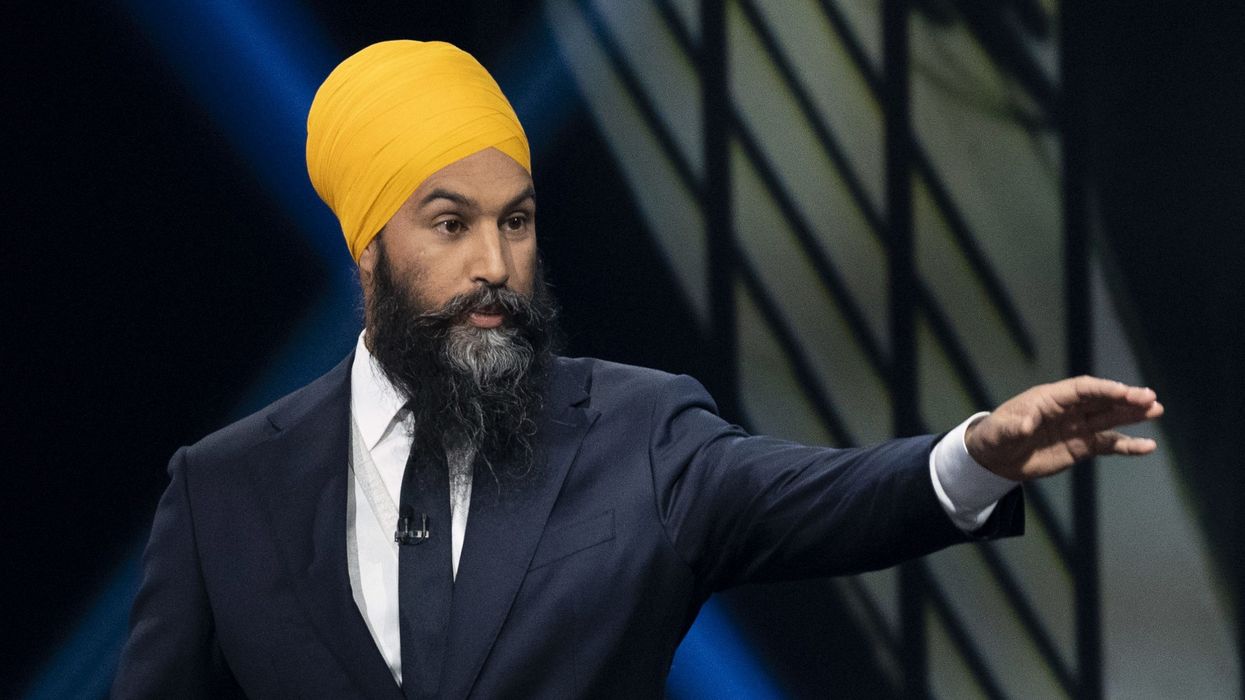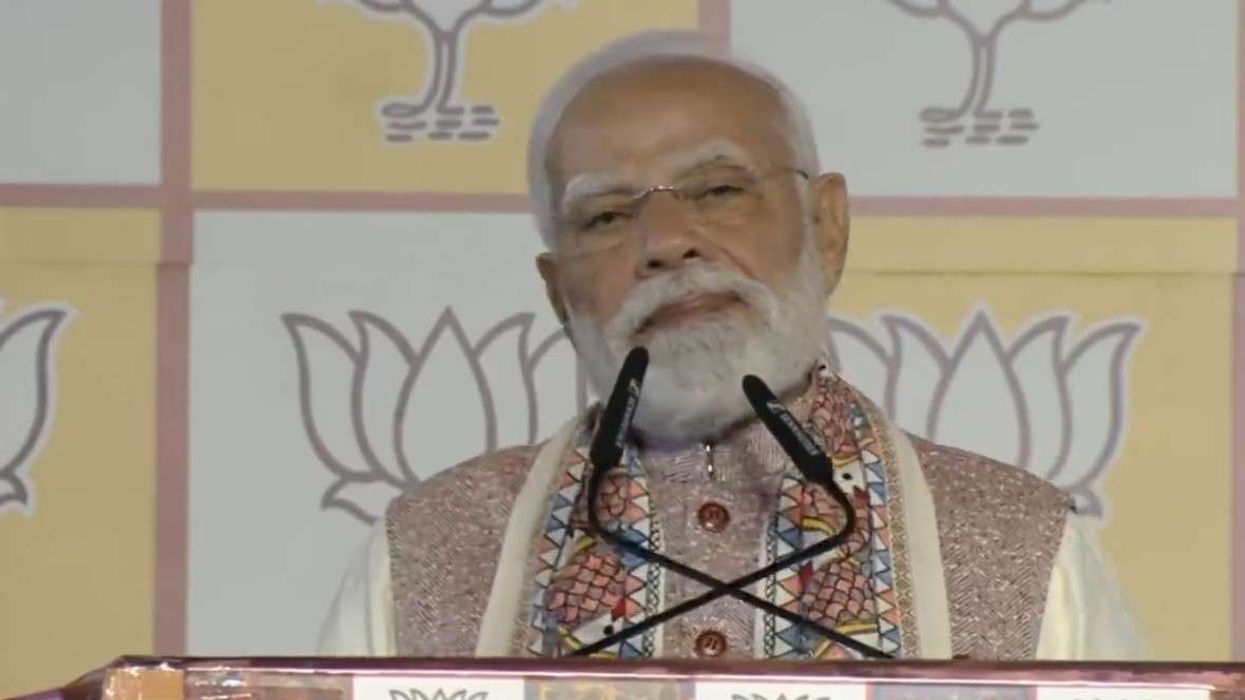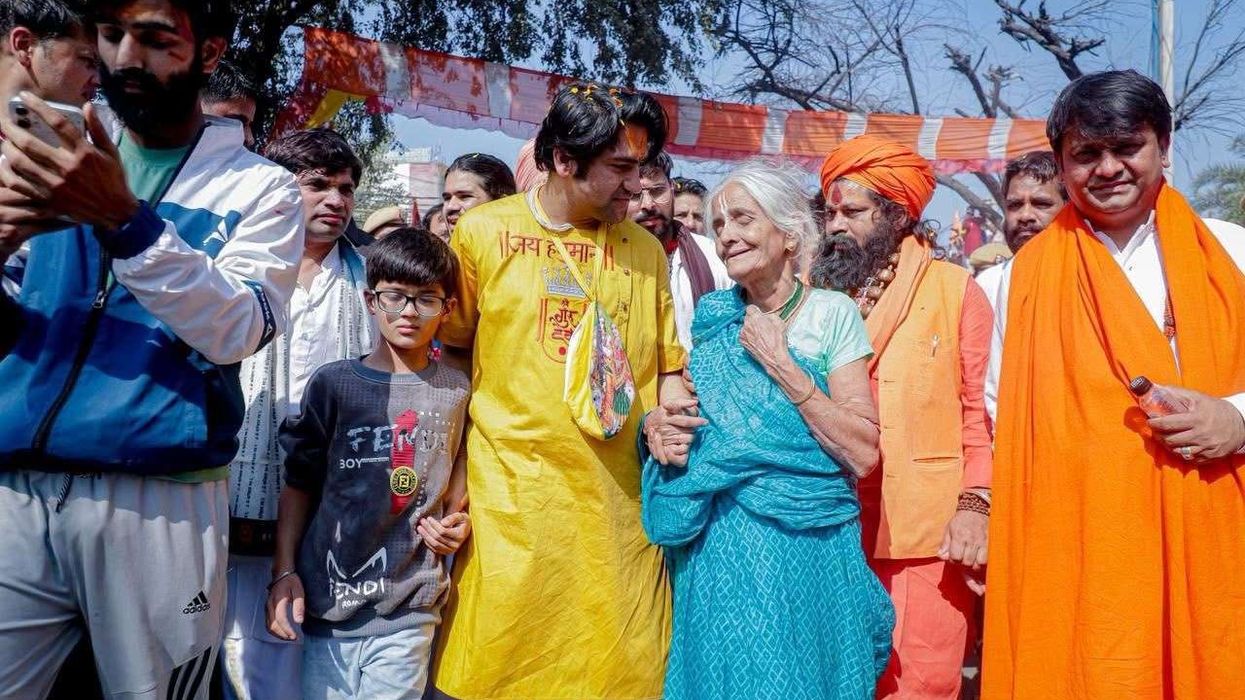As soon as his news conference ends, Jagmeet Singh pulls out his phone, gathers the crowd for an Instagram video and leads them in song, jumping and spinning in place while filming.
As he campaigns ahead of next week's snap elections, Singh, the 42-year-old leader of Canada's leftist New Democratic Party (NDP), is looking to embody a new way of doing politics. And by relying heavily on social media he hopes to woo young voters who once helped propel prime minister Justin Trudeau into office.
A few hours later, he appears dancing to rap music on TikTok, where his videos typically get in excess of one million views.
"People, where are they? They are on social media. I try to use all possible tools to connect with them," says Singh.
Further to the left on the political spectrum than Trudeau's Liberals, his party could find itself holding significant sway in the House of Commons if voters return another minority Liberal government to Ottawa.
Currently, the New Democrats are credited with 20 percent of voting intentions, while Trudeau's Liberals and the Conservatives, led by rookie leader Erin O'Toole, are neck and neck with less than 35 percent support each -- below the threshold for a majority of seats in parliament.
- 'Winds of change' -
"Singh embodies, with his presence on social media, the youthfulness and winds of change that helped Trudeau a few years ago, and what sets him apart from the others is his use of TikTok," Felix Mathieu, a politics professor at the University of Winnipeg, told AFP.
On the policy front, his party's plank also echoes that of the Liberals in many respects, but whereas Trudeau, according to Singh, is "a big talker and a little doer," especially in respect to climate change, he promises to deliver.
He has pledged to cut greenhouse gas emissions in half by 2030, increase taxes on the rich, cancel student debts and check soaring housing prices.
"I am not Justin Trudeau. I'm not like him. I've lived a different life," Singh said during a visit to an indigenous community in Saskatchewan reeling from past federal policies that stripped them of their language and culture.
"And I've felt some of the pain, what it's like to be considered less than (because of the way you look). I understand the pain of not being valued."
Born in Ontario to parents who fled persecution in their native India, Singh became the first non-white leader of a Canadian federal political party and is easily recognizable by his brightly coloured turbans.
"This helps him to stand out while waging an election with a smaller war chest than the Liberals, for example," Mathieu said. "But will this result in more votes, it's not clear,"
On TikTok, "a large part of his followers are not yet old enough to vote," Mathieu added.
And on September 20, unlike in past ballots, "there will be no voting on college campuses due to the pandemic and this is bad for the NDP," said Genevieve Tellier, a politics professor at the University of Ottawa.
His campaign on social media "has led millions of people to watch our content and get involved," says the NDP campaign's Emily Coutts.
That has boosted his support among eligible voters, but also attracted an army of volunteers who've gone out to campaign for him, she said.













